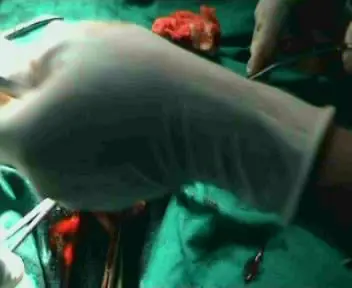Operative Surgery – Circumcision
DAT | English | 352 x 288 | 25.000 fps 591 kbps | MP3 224 kbps | 165 MB
Genre: eLearning
DAT | English | 352 x 288 | 25.000 fps 591 kbps | MP3 224 kbps | 165 MB
Genre: eLearning
Adult circumcision can be performed under local or regional anesthesia. Medical indications for this procedure include phimosis, paraphimosis, recurrent balanitis and posthitis (inflammation of the prepuce). Nonmedical reasons may be social, cultural, personal or religious.
he procedure is commonly performed using either the dorsal slit or the sleeve technique. The dorsal slit is especially useful in patients who have phimosis. The sleeve technique may provide better control of bleeding in patients with large subcutaneous veins. A dorsal penile nerve block, with or without a circumferential penile block, provides adequate anesthesia. Informed consent must be obtained. Possible complications of adult circumcision include infection, bleeding, poor cosmetic results and a change in sensation during intercourse.
Circumcision is performed on an estimated one out of six male newborns worldwide.1 Over 60 percent of male newborns were circumcised in the United States in 1992.2 Circumcision in adults is performed much less often; however, accurate statistics are not available. Adult patients often have a medical indication for the procedure, but circumcision may also be done for social or purely personal reasons. Adult circumcision is usually performed in the outpatient setting by urologists. However, family physicians who practice in isolated or rural areas and who are adequately trained may also offer this procedure. All family physicians should be prepared to advise their patients about the indications for adult circumcision and, if necessary, make appropriate referrals for the procedure.
Indications and Contraindications
The most common indications for adult circumcision are phimosis and paraphimosis.
Although there are numerous medical indications for adult circumcision, none of them is very common.3 The most frequent indication is phimosis, a tightness of the prepuce that prevents its retraction over the glans.4 A patient may also complain of pain with erection or during intercourse. Paraphimosis, the unreplaceable retraction of a narrow foreskin that causes a painful swelling of the glans, is the second most common indication for adult circumcision. Acute paraphimosis is a urologic emergency requiring reduction of the foreskin through surgical or nonsurgical methods. Recurrent balanitis and posthitis (inflammation of the prepuce), preputial neoplasms, excessive prepuce redundancy and tears in the frenulum are also medical indications for adult circumcision.5
Patients may have social, religious or personal reasons for requesting a circumcision.6 It is important to explore these reasons with the patient to ensure that he has a thorough understanding of the risks and benefits of circumcision and alternatives to the procedure.
There are no specific contraindications to adult circumcision in the literature; however, patients with active infection, possible squamous cell carcinoma of the penis or anatomic abnormalities of the external genitalia should be referred for a urologic consultation.









